
Risk Assessment and Mitigation in Drafting Translation Contracts
SUZANA CARMEN CISMAS
Department of Modern Languages and Communication
The Polytechnic University of Bucharest
313 Splaiul Independentei, sector 6, 060042, Bucharest
ROMANIA
suzanacismas@yahoo.com
Abstract: - The Internet has indeed revolutionized all careers worldwide. Work can now be found for
corporations and a whole range of clients on a global scale. Translation-related risks are, by nature, difficult to
identify, requiring probing/testing the source text in order to determine its degree of translatability and the
potential linguistic challenges that may pose a threat or may generate loss of revenue in case of confusions,
misunderstandings, wrong text segmentation, or inconsistencies in terminology. A linguistic review of the
source text, by a source-language native speaker, familiar with interpretation activities, prior to translation,
may reveal linguistic properties, such as complexities, flaws and ambiguities that may present a risk during
the subsequent translation process, usually carried out by a target-language native speaker. Once spotted, the
potential errors can be addressed through specific training of translation resources across all target languages,
preventing problems that could otherwise emerge in translated contracts or in various other legal documents.
Key-Words: - risk assessment, mitigation, translations for contracts and other legal documents
1 Introduction
Language translation is the appropriate
conversion of text authored in one source language
into another target language. Necessary to enable
effective communication between speakers/readers
of different languages, translation is applied in
various commercial and non-commercial settings for
a variety of purposes: literary translation (fiction,
poetry), legal translation (agreements, patents), and
commercial translation in connection with trade
(sales, marketing, promotional content or product
packaging/labeling). As technology makes our world
smaller, many businesses choose to promote them-
selves beyond the borders of the English-speaking
world. This means translating their marketing
materials into one or more different languages.
Companies with websites are the ones that mostly
hire translators as it is more cost-effective to reach
international clientele through the Internet.
Translation services contracts often are more
cost-effective than establishing in-house language
programs. Contractors develop fluency in a certain
language and maintain it as their core competence,
which is significantly easier than trying to draw from
a limited pool of employees or attract new hires.
Subcontracting has become more frequent, and the
use of freelance language service providers is on the
rise. Small companies and even individuals have
recently obtained government contracts, although the
trend is toward bigger agreements.
Language services have become essential in
ensuring effective communication in all fields,
between people in all walks of life, and the newly
developed programs for foreign trade, diplomacy
and domestic multiculturalism urge governments to
improve their translation and interpretation services.
2 Problem Formulation
On today's international market, to cover a
wide array of subject matters, provide low cost, and
enable quick time-to-market, commercial translation
is largely an outsourced service.Translation shoppers
contract translation vendors, companies, agencies or
individuals to carry out the translation, which is
typically provided as a full service that may/may not
include value-added services (Quality Assurance,
DesktopPublishing/Formatting,Project Management)
2.1 Translation quality control
Translation quality is generally judged by
the absence of loss, modification, or addition of
meaning as well as by adherence to target language
rules and conventions. Like all human activities,
however, language translation is subjective and
subject to variation and human error. Perceived
variations in meaning between the original source
Proceedings of the International Conference on RISK MANAGEMENT, ASSESSMENT and MITIGATION
ISSN: 1790-2769
491
ISBN: 978-960-474-182-3

language and translated content or linguistic errors
in the target text are considered translation errors.
In standard translation processes, the risk of
translation error is mitigated by means of process
and resource controls. These controls can include:
• redundant reviews,
• translation process support, (through glossaries
or reference materials),
• increased resource qualification, (assigning the
task to translators with advanced knowledge of the
subject matter or of that specific document type).
Effective quality control measures, however,
vary according to document and subject matter
complexity and the intended requirements & purpose
of the translated document. For instance, when
translating a simple business letter for informational
purposes, an appropriate transposition process might
be extremely basic, e.g., translation by anyone with
source/target language familiarity, with no further
review required. In another instance, complex user
instructions for hazardous technical equipment may
require translation in accordance with regulatory
purposes connected with safety, export, import,
workforce management and deployment. Elaborate
quality assurance processes are required in order to
produce documents which meet both the intended
purpose of effective operation and all relevant
national and supra-national regulatory conventions.
2.2 Typical mistakes
Examples of bad practice are known all over
the world, for the losses they caused, for the new
legislation they spurred, or for the mere fun that they
generated. Here are some samples:
• During a trade fair in the 1990s,a company drafted
a Romanian/German bilingual contract, stipulating
the delivery of 3,000 cars, half black, half yellow.
Obviously, the firm wanted 1,500 yellow cars and
1,500 black. What happened (as a result of mis-
translation) was that all products had yellow hoods
(half yellow) while the rest was black (the other
approximate half). The contractor did not accept
them and a new lot with the correct specifications
had to be manufactured. The initial products were
delivered to the domestic market and became taxis.
• A Dublin-based company was ordered to pay each
foreign member of its staff €5,000.00, totaling to
€290,000 for failure to provide them with foreign
language translation of the work contracts and safety
documentation. According to the findings, some
foreign workers were treated less favorably than
Irish employees and other foreign members who, on
a seemingly selective basis, have received document
translation of their employment contracts and safety
procedures. As not everyone was granted the same
opportunity, the complainants were disadvantaged in
relation to their access to and understanding of such
documents.The chances for such an incident to erupt
in other countries are very high, considering that
many immigrants on the job have different levels of
English proficiency and need help with foreign
language translations. The employers are at risk of
becoming selective, should they choose to render
translation services only to those they have thought
would need it rather than to all the non-English-
speaking employees. As a result, HR managers must
ascertain that all the foreign immigrants they employ
(without exception, and regardless of race), have
fully understood all items stipulated in their employ-
ment contracts/company policies/safety procedures.
• In the case of emergency calls, optimization
procedures concerning cost reduction and speed
increase include the services of a translator in
multicultural/multilingual areas.If dispatchers cannot
understand the caller, they just send a police officer
to the scene. A good percentage of those calls are
misdials, hang-ups, and non-emergency calls, which
leads to a huge waste of time and resources. With
language services in place, a dispatcher could patch
in a translator to handle the call, rather than uselessly
sending the police to the scene.
There is wisdom in resorting to the services of
a professional foreign language translation company,
in order to avoid the legal pitfalls and waste in the
cases cited above. The translators will take the
following measures:
• critically read different documents translated by
different official institutions, to find typical
inconsistencies in using words, phrases, paragraphs,
legal terminology and identify mistakes in style
• translators shall make the national legal document
consistent
• translators shall officially report all inconsistencies
to the institutions concerned, via the national press
or online media, until they get the measures to
rectify such mistakes. The process goes faster, if the
translators have an institution representing them.
• translators need access to different documents to
comparatively study them.
2.3 Consequences of translation errors
In a business environment where multinational
corporations and organizations interact on a global
scale, the laws and legal systems of several different
nations can come into play. In such cases, it can be
necessary to translate contracts, deeds, certificates,
and a number of other legal documents for various
purposes.
Proceedings of the International Conference on RISK MANAGEMENT, ASSESSMENT and MITIGATION
ISSN: 1790-2769
492
ISBN: 978-960-474-182-3

Mistakes in this arena are costly, often causing
unexpected delays, mounting legal fees, and loss of
opportunities. Incorrectly translated written evidence
may not be accepted in a foreign court, and, in the
worst case scenario, a legal dispute may even be
completely dismissed because of something as
seemingly minor as a poorly translated legal brief.
As such, it is necessary to take the utmost care when
dealing with matters of legal documents translations,
because they play such a large role in the operations
of global business.
Certified legal translations (also known as legal
service translations) may be required under the
circumstances where a legal document (a document
considered official/legally binding, like a contract)
must be translated from its source language into a
new target language for use in a foreign country. In
order for the original document to remain valid
under the legal system of the target country, steps
must often be taken to change the legal terminology,
syntax, and structure of the document so that it
aligns more closely with the target legal system.
These translations must be certified by a certified
legal translator, and they also need to be notarized,
or authenticated, before they are considered valid
under the target country law.
In the case of mistranslations, the risks to the
consumer and the manufacturer may be judged to be
quite severe. Thus, within the commercial realm, the
product of the translation activity should be assessed
according to its risk for the consumer and for the
manufacturer. For the consumer, this risk can be
quantified as a function of the nature of translated
document type and of the severity of the mistake: in
Instructions for Use for a complex technical device,
a simple typographic error may produce very little
risk to the consumer or, alternatively, it may produce
tremendous risk should the error cause the consumer
to use the device inappropriately or incorrectly.
3 Problem Solution
However, any language translation process that
fails to manage the inherent risks of the activity that
leads to an inappropriately translated product may
lead to serious consumer risk and/or harm. The
resulting negative publicity (from resulting litigation
and/or recall), may affect the manufacturer's market
share and/or cast the manufacturer in an undesirable
light. Furthermore, erroneously translated documents
may also violate regulatory requirements, leading to
sanctions and additional commercial and
organizational harm.
Next, hazards and mitigation strategies related
to the main sectors of translation are discussed.
3.1 Error risk via human translation activity
1. Insufficient or incorrect project specifications.
•
Communication with client for clarification of
required specifications (client education about the
translation process and resources may be required).
•
Documented/controlled project specifications;
•
Translation quality plans, project plan, client
dossier, document/print specifications (additional
custom specification forms, as required.
•
Pro-Forma risk management plans provide
general process guidance if detailed specifications
are not available
2. Overly complex instructions/specifications
• Revisit/discuss requirements and specifications
with client and functional areas
• Break project down into sub-components and
milestones for more structured planning
• Detailed project planning and strategy
• Consider custom planning tools appropriate for
project complexity
3. Rush turnaround requirements
• Client communications/negotiation
• Advanced scheduling of resources
• Utilize time zones, weekend resources
• Production and delivery schedule on rush projects
4. Insufficient or deficient reference material
• Request additional resources from the client
• Obtain 3 rd party references/resources
• Exclude questionable references from
consideration (such as deficient legal translations)
5. Inconsistent file naming conventions
• Create clarifying file list/matrix
• Tag files for easier internal tracking
6. Inaccurate lines or changing tables
• Document change verification prior to project start
(proofreading/verification by client), client sign-off
7. Mid-project document changes
• Analysis/evaluation for the best method to
incorporate changes into the workflow (interrupted
current process, parallel process, manual updates)
8. Uncontrolled client review activities
• Educate client about the linguistic review process
• Determine review purpose and objective
• Direct communication with reviewers
• Implement the reviewer change control process
(assessment of changes)
9. Unconventional linguistic specifications
• Analyze and assess the scope of requirements
• Educate the client about the quality impact and the
added risk of forced linguistic specifications
• Educate the client about the lack of benefit and
risks of forced cross-language consistencies
• Develop detailed guidelines for linguists and staff
Proceedings of the International Conference on RISK MANAGEMENT, ASSESSMENT and MITIGATION
ISSN: 1790-2769
493
ISBN: 978-960-474-182-3

3.2 Hazards related to source content
1. Obscure, novel, or highly specialized subject
• Clarification by client
2. Excessive use of jargon
3. Inconsistently written content (in point of style)
4. Inconsistent use of terminology
• Develop project lexicon and client glossary
5. Lack of sufficient grammatical context (isolated
strings or fragments)
• Obtain and provide context through appropriate
reference materials (text and/or graphics)
6. Lack of sufficient subject matter context
7. Lack of subject matter/product reference
8. Strictly defined target audience
• Obtain detailed target audience data from client
• If the target audience is general, adjust translation
styles accordingly (coordinate the educational and
reading level requirements with the client)
9. Updates to legal translations of questionable
source or quality
• Audit the legal portions prior to update
• Probe legal translations for terminology and style,
and match to the allowable extent.
3.3 Hazards related to project management
1. Project complexity (resulting in hand-off errors)
• Revisit/discuss requirements and specifications
with the client and the translation departments
• Conduct a project kick-off meeting
• Break the project down into sub-components and
milestones for more structured planning
• Detailed project planning and strategy
• Consider custom planning tools appropriate to the
project complexity
• Consult/develop client dossier
• Update client dossier with later information
2. Large number of source files and target languages
• Controlled project directory structure for effective
document control
3. Multiple source document formats
• Use the custom file list/matrix to organize the
project files and language requirements
4. Miscommunication or lack of communication
• Documentation on specification-related communi-
cations (correspondence and specifications folders)
• Communication redundancy (reiterate/rephrase
complex descriptions of specifications/requirements)
• Communication diversity (provide both oral
instructions and written communication support)
5. Project transfer between project managers
• Effectively documented/maintained risk
• Management file and process forms
• Structured hand-off meeting
6. Insufficient production
• Increase production time
• Increase resource pool (short term/long term)
3.4 Hazards related to Desktop Publishing
1. Highly manual formatting tasks demand increased
rigor in formatting
2. Copy/paste activities
• Increased rigor/specific focus
• Cut&paste logical full segments (avoid numerous
small segments or individual words)
• track changes when cutting/pasting from Word
3. Unintended joining/breaking of segments
• Formatting optimization
• Segmentation check
4. Accidental deletion of text
• Specific focus scheme (sentence/paragraph/count)
5. Text typing (typing of foreign language text by
unqualified resource)
• Final linguistic inspection
• Back Edit
6. Extensive formatting optimization
7. Import/export between applications
8. Uncontrolled character set conversions (character
corruptions or replacements, font substitutions)
9. Automated text references of all kind
3.5 Hazards related to Translation Memory
Processing
1. File import/export errors resulting in pseudo-
translation
2. Incorrect or misleading text segmentation
3. Segmentation check (full or spot/risk-based)
4. Translation memory degradation over time
• Assess memory quality at regular intervals in
order to determine the risk level
• Edit pre-translated exact matches on high risk
memories
• Incorrectly linked memory database
3.6 Hazards related to quality assurance
1. Proofreading against wrong source file
2. Overriding of specifications
• Controlled project directory structure for effective
document control
• Ensure complete, detailed project specifications
• Training/feedback
• Provide detailed task guidance
3.7 Hazards related to human resources
• Assignment of unsuitable or unqualified resource
• Inability to execute (quality/time). Avoid rushing
tasks/resources(consider multiple resources and
parallel processes instead)
Proceedings of the International Conference on RISK MANAGEMENT, ASSESSMENT and MITIGATION
ISSN: 1790-2769
494
ISBN: 978-960-474-182-3

• Insufficient competence, experience, or education
• Lack of subject matter expertise
• Unfamiliar with the task
• Lack of source language comprehension
• Market supply limitations in minor languages and
languages of lesser commercial diffusion
• Strategic recruiting
• Overloaded people need long production timelines
All the above show the mitigation processes
that take in consideration the device risk
classification, the intended use of the document, and
the target audience.
4 Conclusion
As previously mentioned, translation activities
carry inherent risks for error, due to several causes.
Firstly, there is the problem inherent between
a source language and a target language. Translation
is not a direct or mechanical conversion of lexical
units (word-for-word translation) from one language
to another; but, rather, a creative process (similar to
originally authoring the translated text in the target
language) that seeks to create or reproduce the
equivalent meaning of a text written in a first source
language in another target language. An equivalent
meaning herein refers to content, context, style, tone,
register, and so forth.
Secondly, translations, by their very nature,
remove a text from the control and intent of its
author, offering the translator control or poetic
license over the final text. Unless the translation into
the target language is carried out by the author of the
original source text, risk of misinterpretation or
misconstruction of the intended meaning of the
source text is possible. Even were the author of the
original source text to translate the text into the
target language, the author's imperfect knowledge of
the target language may generate risk.
Thirdly, there is the native fluency dilemma,
by which, in order to express the equivalent meaning
of a source-language text in a target language fully,
the translator must have native fluency in the target
language; not to mention that, in order to
comprehend the source-language text fully, without
any danger of misinterpreting or misconstruing the
source text, native fluency in both the target and the
source languages is required. Obviously, these
requirements are mutually exclusive (unless the
poly-lingual author is also the translator of his or her
own document) and must be dealt with through the
translation process design.
Finally, as a cognitive activity, every task
within the translation activity is subject to human
error. Although error rates can be measured
empirically, they are unpredictable and subject to
variation depending on many environmental factors.
Within the realm of translation, inherent
translation risks are challenges that cannot be
eliminated. They, however, can be mitigated through
a number of risk management techniques: the use of
specialized tested, audited, and documented
translation resources. Furthermore, at the process
level, inherent risks can be effectively addressed
through quality control activities, such as redundant
checks, audits, testing, and proofreading steps by
supervisors. Because all activity within a translation
project—and, most commonly, document translation
and text formatting—carries inherent and specific
risks, a separate process is needed to control these
risks throughout the activity, for instance through
quality control steps following each production
activity. Error risk cannot be completely eliminated
from the translation effort, so it must be minimized
by mitigation and strategic application of risk
controls. Even if the probability of translation errors
cannot be ruled out, translation quality systems must
be implemented. They should be outcome-driven,
based on the assumption that the consumer will act
upon any translation error.
Not only are translators rare and carrying
huge responsibilities, but they also act as gateways
to new markets. They enable an even greater
percentage of the literate world, initially deprived of
access to certain information for lack of English-
language skills, to access data and opportunities that
can mean vastly improved gross turnover for any
organization with significantly established interests.
References:
1. Anderson, R. Security Engineering and Risk
Assessment, New York, John Wiley & Sons, 2001.
2. Bernstein, P.L. The remarkable story of risk, New
York, John Wiley and Sons, 1996
3. Cismas, S.C., English teaching within the
framework of recent technologies and the new
information order, in Proceedings of the 8th WSEAS
international conference on e-activities, Tenerife
Spain WSEAS Press, 2009, pages 25-29
4. Dembo, R.C, Freeman, A. Seeing tomorrow.
Rewriting the rules of risk, John Wiley & Sons, 1998
5. Hacker, J.S. The great risk shift, OUP, 2008.
6. Ropeik, D., Gray, G. Risk: a practical guide for
decisions, Topeka Bindery, NY, 2002
7. Shiller, R.J. Risk in the 21st century. Princeton
University Press, 2003
8. Steele, T.M. Managing Legal Liability. Library
Administration & Management, 1997
9. Woods, M. International risk management,
London, CIMA, 2008.
Proceedings of the International Conference on RISK MANAGEMENT, ASSESSMENT and MITIGATION
ISSN: 1790-2769
495
ISBN: 978-960-474-182-3





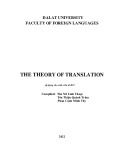
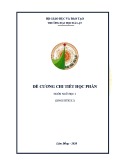
![Đề cương chi tiết Tiếng Anh thương mại 2 (Business English 2) - Trường ĐH Đà Lạt [Mới nhất]](https://cdn.tailieu.vn/images/document/thumbnail/2025/20250212/tuetuebinhan666/135x160/7211739332500.jpg)
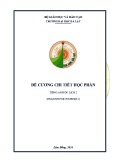
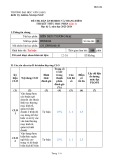
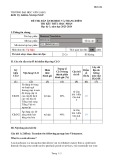
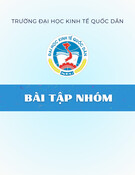

![Trắc nghiệm Tiếng Anh kinh doanh: Bài test chuẩn và [từ mô tả phù hợp]](https://cdn.tailieu.vn/images/document/thumbnail/2025/20251102/ngocanhn201@gmail.com/135x160/51201762135116.jpg)


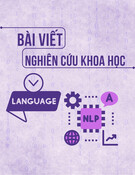


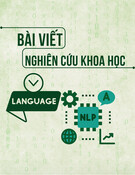
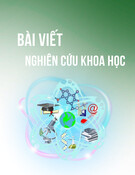
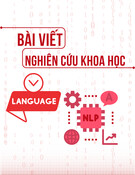
![Đề cương ôn tập Tiếng Anh du lịch (English for Tourism) [mới nhất]](https://cdn.tailieu.vn/images/document/thumbnail/2025/20250728/kimphuong1001/135x160/55271753673317.jpg)



